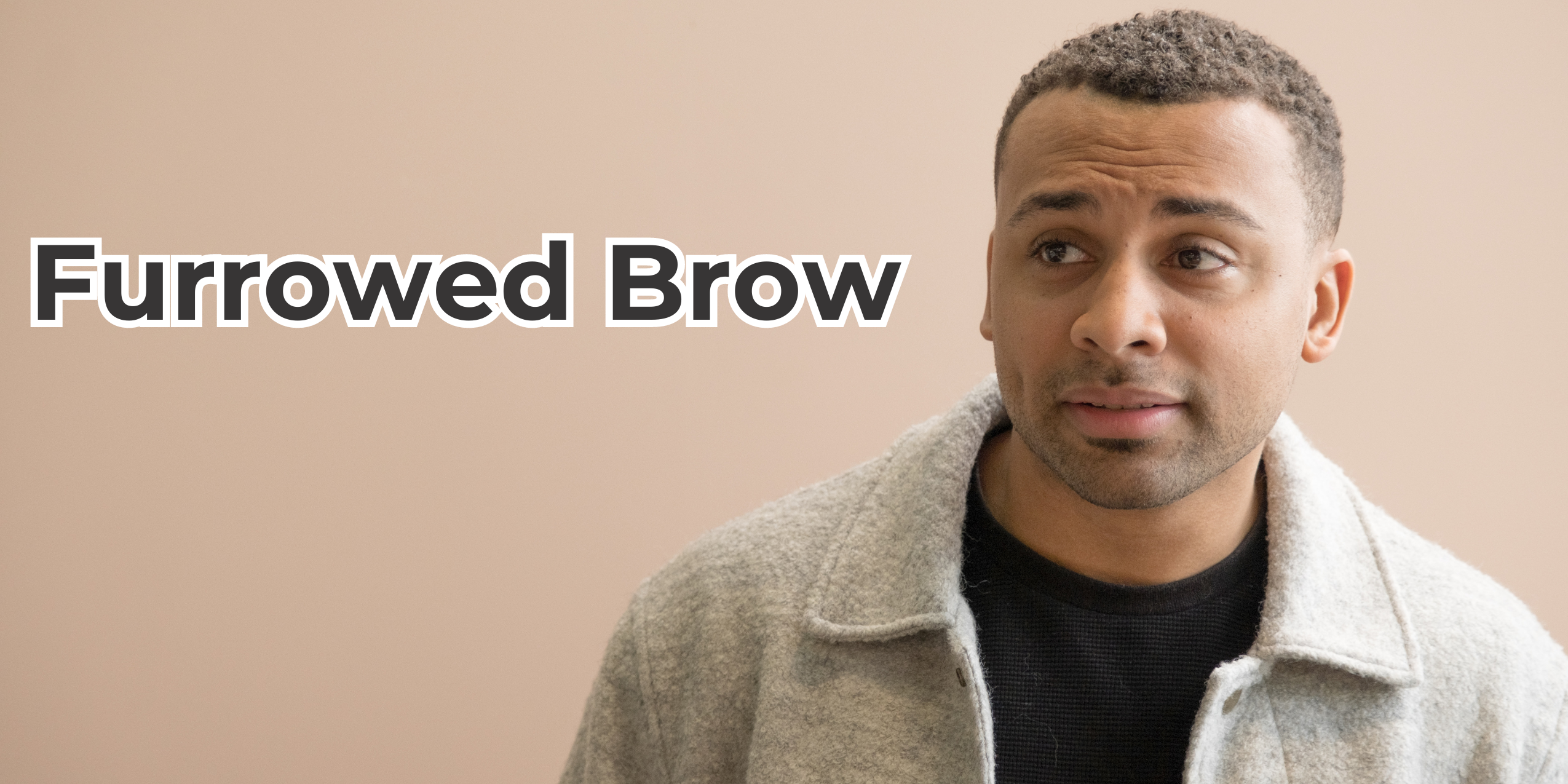A furrowed brow is a common facial expression where the forehead wrinkles or creases, typically due to muscle contractions. This can occur naturally as part of facial movements or can be more pronounced and permanent due to various factors such as aging, stress, or habitual expressions. While a furrowed brow can convey emotions like confusion, concern, or anger, it is also a cosmetic concern for many individuals who seek smoother, more youthful skin.
Addressing a furrowed brow is important for both aesthetic and psychological reasons. A smooth forehead can enhance one’s appearance, making them look younger and more relaxed. Furthermore, reducing a furrowed brow can alleviate the perception of negative emotions, thereby improving social interactions and boosting self-confidence. Understanding the causes and treatments available is essential for anyone looking to minimize this common facial issue.
Anatomy of the Furrowed Brow
Muscles Involved
The primary muscles involved in creating a furrowed brow are the frontalis, corrugator supercilii, and procerus muscles. The frontalis muscle is responsible for raising the eyebrows, while the corrugator supercilii and procerus muscles pull the eyebrows downward and inward, causing vertical and horizontal lines on the forehead. Understanding the role of these muscles is crucial for identifying effective treatments.
Skin and Aging Factors
As we age, our skin loses elasticity and collagen, making it more susceptible to wrinkles and lines. The repeated contraction of the brow muscles over time exacerbates these creases, resulting in a more pronounced furrowed brow. Additionally, factors such as sun exposure, smoking, and poor skincare routines can accelerate the aging process, leading to deeper lines and wrinkles on the forehead.
Causes of a Furrowed Brow
Genetics
Genetics play a significant role in the development of a furrowed brow. Some people are naturally predisposed to have more prominent forehead lines due to their genetic makeup. If your parents or grandparents had deep forehead wrinkles, you might be more likely to develop them as well.
Aging Process
The aging process is a major contributor to a furrowed brow. As we get older, our skin’s ability to produce collagen and elastin diminishes, leading to sagging and wrinkling. The cumulative effect of years of facial expressions also becomes more evident, with lines and creases becoming permanent fixtures on the forehead.
Emotional Expressions
Emotional expressions such as frowning, concentrating, or squinting can cause the muscles in the forehead to contract repeatedly. Over time, these contractions lead to the formation of lines and wrinkles. Chronic stress or anxiety can further exacerbate this issue, as individuals may habitually furrow their brow without realizing it.
Environmental Factors
Environmental factors like sun exposure, pollution, and harsh weather conditions can damage the skin, leading to premature aging and the development of a furrowed brow. Ultraviolet (UV) rays from the sun break down collagen and elastin fibers in the skin, causing it to lose its firmness and elasticity.
Health Conditions
Certain health conditions, such as chronic headaches or vision problems, can cause individuals to furrow their brow more frequently, leading to the formation of wrinkles. Addressing the underlying health issues can help reduce the occurrence of a furrowed brow.
The Psychological Impact
Stress and Anxiety
A furrowed brow is often associated with stress and anxiety. When we are stressed or anxious, our facial muscles tense up, leading to the formation of lines and wrinkles on the forehead. This can create a feedback loop where the appearance of a furrowed brow contributes to further stress and self-consciousness.
Social Perceptions
In social interactions, a furrowed brow can be misinterpreted as a sign of anger, disapproval, or confusion, even if the person is not experiencing these emotions. This can affect personal and professional relationships, as others may perceive the individual as unfriendly or unapproachable. Addressing a furrowed brow can improve social perceptions and interactions.
Preventing a Furrowed Brow
Skincare Routines
Implementing a consistent skincare routine is essential for preventing a furrowed brow. This includes cleansing, moisturizing, and protecting the skin with sunscreen. Using products that contain antioxidants, peptides, and retinoids can help boost collagen production and maintain skin elasticity, reducing the likelihood of developing deep forehead lines.
Lifestyle Changes
Adopting a healthy lifestyle can significantly impact the appearance of your skin. This includes eating a balanced diet rich in vitamins and minerals, staying hydrated, getting regular exercise, and avoiding smoking and excessive alcohol consumption. These habits can help maintain skin health and prevent premature aging.
Regular Facial Exercises
Facial exercises can help strengthen the muscles in the forehead, reducing the appearance of a furrowed brow. Simple exercises such as raising and lowering the eyebrows, massaging the forehead, and practicing relaxation techniques can improve muscle tone and promote smoother skin.
Non-Surgical Treatments
Botox Injections
Botox injections are one of the most popular non-surgical treatments for a furrowed brow. Botox works by temporarily paralyzing the muscles responsible for creating forehead lines, resulting in a smoother appearance. The effects typically last for three to six months, and repeated treatments are necessary to maintain the results.
Dermal Fillers
Dermal fillers are another effective non-surgical option for treating a furrowed brow. Fillers, such as hyaluronic acid, are injected into the skin to plump up wrinkles and lines, providing a more youthful appearance. The results can last from six months to a year, depending on the type of filler used.
Topical Creams and Serums
There are numerous topical creams and serums available that can help reduce the appearance of a furrowed brow. Products containing retinoids, peptides, and hyaluronic acid can boost collagen production, improve skin elasticity, and hydrate the skin, minimizing the formation of forehead lines.
Surgical Options
Brow Lift Surgery
Brow lift surgery, also known as a forehead lift, is a surgical procedure that raises the eyebrows and smooths out forehead wrinkles. This procedure can provide long-lasting results, but it involves a longer recovery time and potential risks associated with surgery. It is typically recommended for individuals with severe forehead lines and sagging brows.
Laser Treatments
Laser treatments, such as fractional laser resurfacing, can effectively reduce the appearance of a furrowed brow by promoting collagen production and skin regeneration. This non-invasive procedure involves using laser energy to target and remove damaged skin cells, resulting in smoother and tighter skin. Multiple sessions may be required to achieve optimal results.
Home Remedies and Natural Solutions
Essential Oils
Essential oils, such as lavender, frankincense, and rosehip oil, can help improve skin health and reduce the appearance of a furrowed brow. These oils have anti-inflammatory and antioxidant properties that can promote skin regeneration and hydration. Applying a few drops of essential oil to the forehead and gently massaging it in can provide noticeable benefits.
Herbal Treatments
Herbal treatments, such as aloe vera, green tea, and chamomile, can soothe and nourish the skin, reducing the formation of forehead lines. These natural remedies contain antioxidants and anti-inflammatory compounds that can improve skin elasticity and promote a smoother complexion. Incorporating herbal treatments into your skincare routine can help maintain healthy and youthful skin.
Facial Massages
Facial massages can help relax the muscles in the forehead, reducing the appearance of a furrowed brow. Using gentle, circular motions, massage the forehead with your fingertips or a facial roller for a few minutes each day. This can improve blood circulation, promote lymphatic drainage, and enhance skin tone.
The Role of Diet and Hydration
Nutritional Impact on Skin Health
A balanced diet rich in vitamins, minerals, and antioxidants is essential for maintaining healthy skin. Nutrients such as vitamin C, vitamin E, zinc, and omega-3 fatty acids can boost collagen production, protect against free radical damage, and improve skin elasticity. Incorporating a variety of fruits, vegetables, nuts, and seeds into your diet can promote a smoother and more youthful complexion.
Importance of Staying Hydrated
Staying hydrated is crucial for maintaining skin health and preventing a furrowed brow. Dehydrated skin is more prone to dryness and wrinkles, making it essential to drink plenty of water throughout the day. Additionally, consuming hydrating foods, such as cucumbers, watermelon, and leafy greens, can help keep your skin plump and supple.
Makeup Tips to Conceal a Furrowed Brow
Using Concealer and Foundation
Using the right makeup products can help conceal a furrowed brow and create a smoother appearance. Start by applying a primer to fill in fine lines and create a smooth base. Then, use a concealer that matches your skin tone to cover the forehead lines, followed by a lightweight foundation to even out your complexion. Setting the makeup with a translucent powder can help it last longer and prevent creasing.
Highlighting and Contouring Techniques
Highlighting and contouring can create the illusion of a smoother forehead. Use a highlighter on the high points of your face, such as the brow bone and the center of the forehead, to draw attention away from the lines. Apply a contour shade along the temples and the hairline to add depth and dimension, creating a more youthful and lifted appearance.
Furrowed Brow in Different Cultures
Cultural Perceptions and Significance
The perception and significance of a furrowed brow can vary across different cultures. In some cultures, a furrowed brow may be seen as a sign of wisdom and experience, while in others, it may be associated with negative emotions or stress. Understanding these cultural differences can provide valuable insights into how a furrowed brow is viewed and addressed globally.
Traditional Remedies
Many cultures have traditional remedies for treating a furrowed brow. For example, in Ayurvedic medicine, facial massages with herbal oils are used to relax the muscles and improve skin health. Traditional Chinese medicine may incorporate acupuncture and herbal treatments to promote skin rejuvenation and reduce wrinkles. Exploring these remedies can offer alternative approaches to addressing a furrowed brow.
Emotional and Mental Health Connections
Stress Management Techniques
Managing stress is essential for preventing and reducing a furrowed brow. Techniques such as deep breathing exercises, progressive muscle relaxation, and yoga can help relax the facial muscles and reduce tension in the forehead. Incorporating stress management practices into your daily routine can improve your overall well-being and appearance.
Mindfulness and Meditation
Mindfulness and meditation can help reduce the habitual furrowing of the brow by promoting relaxation and awareness of facial expressions. Practicing mindfulness involves paying attention to your thoughts and emotions without judgment, while meditation focuses on calming the mind and body. Regular practice can help you become more aware of your facial expressions and reduce the occurrence of a furrowed brow.
Also Read: How to Speed Up Wisdom Teeth Recovery
Expert Opinions and Interviews
Dermatologists’ Advice
Dermatologists recommend a combination of preventive measures and treatments to address a furrowed brow. This includes using sunscreen, incorporating anti-aging skincare products, and considering non-surgical options like Botox and dermal fillers. Consulting with a dermatologist can help you develop a personalized skincare plan to achieve the best results.
Plastic Surgeons’ Insights
Plastic surgeons offer various surgical and non-surgical treatments for a furrowed brow. They emphasize the importance of choosing the right treatment based on individual needs and preferences. Procedures like brow lift surgery and laser treatments can provide long-lasting results, while non-surgical options like Botox offer temporary but effective solutions. Seeking the advice of a qualified plastic surgeon can help you make informed decisions about your treatment options.
Psychologists’ Perspectives
Psychologists highlight the psychological impact of a furrowed brow on self-esteem and social interactions. They emphasize the importance of addressing underlying emotional issues, such as stress and anxiety, to reduce the habitual furrowing of the brow. Cognitive-behavioral therapy (CBT) and other therapeutic approaches can help individuals manage stress and improve their overall mental well-being.
Common Myths About Furrowed Brows
Debunking Popular Misconceptions
There are several common myths about furrowed brows that need to be debunked. For example, some people believe that only older individuals develop forehead lines, but the truth is that even younger people can experience a furrowed brow due to factors like stress and genetics. Another myth is that facial exercises alone can completely eliminate wrinkles, but in reality, a combination of treatments is often necessary for optimal results.
Scientific Facts
Understanding the scientific facts about a furrowed brow can help dispel misconceptions and provide clarity. Research shows that repeated muscle contractions, loss of skin elasticity, and environmental factors all contribute to the formation of forehead lines. Scientific advancements in skincare and cosmetic treatments offer effective solutions for reducing and preventing a furrowed brow.
Long-Term Solutions
Creating a Personalized Skincare Plan
Developing a personalized skincare plan is essential for addressing a furrowed brow. This includes using products tailored to your skin type and concerns, such as cleansers, moisturizers, and anti-aging treatments. Regularly visiting a dermatologist for professional advice and treatments can help you maintain healthy, youthful skin over the long term.
Ongoing Treatment and Maintenance
Maintaining the results of treatments for a furrowed brow requires ongoing care and maintenance. This includes scheduling follow-up appointments for non-surgical treatments like Botox and dermal fillers, as well as continuing a consistent skincare routine. Staying proactive and committed to your skincare plan can help you achieve and maintain a smooth, wrinkle-free forehead.
Case Studies and Personal Stories
Success Stories
Hearing about the success stories of individuals who have effectively addressed their furrowed brow can be inspiring and informative. These stories often highlight the combination of treatments and lifestyle changes that led to significant improvements in their appearance and self-confidence. Sharing these experiences can provide valuable insights and motivation for others facing similar concerns.
Challenges Faced by Individuals
Understanding the challenges faced by individuals dealing with a furrowed brow can shed light on the complexities of this issue. From dealing with societal perceptions to navigating the various treatment options, these personal stories can offer a deeper understanding of the emotional and physical impact of a furrowed brow.
Innovations in Furrowed Brow Treatments
Latest Research and Developments
The field of cosmetic treatments is constantly evolving, with new research and developments offering innovative solutions for a furrowed brow. Advances in skincare technology, such as the development of new injectable treatments and laser therapies, provide more effective and less invasive options for reducing forehead lines. Staying informed about the latest advancements can help you make educated decisions about your treatment options.
Future Trends
Future trends in furrowed brow treatments may include the use of regenerative medicine, such as stem cell therapy, to promote skin rejuvenation and reduce wrinkles. Additionally, advancements in personalized medicine may lead to customized treatments tailored to an individual’s genetic makeup and skin type. Keeping an eye on these trends can help you stay ahead of the curve and explore cutting-edge options for addressing a furrowed brow.
Products to Help with a Furrowed Brow
Top Skincare Products
There are numerous skincare products available that can help reduce the appearance of a furrowed brow. Look for products that contain ingredients like retinoids, hyaluronic acid, peptides, and antioxidants. These ingredients can boost collagen production, improve skin elasticity, and hydrate the skin, resulting in a smoother forehead.
Innovative Tools and Devices
Innovative tools and devices, such as facial rollers, microcurrent devices, and LED light therapy, can complement your skincare routine and enhance the effectiveness of your treatments. These tools can help stimulate blood circulation, promote collagen production, and improve skin tone, reducing the appearance of forehead lines.
Furrowed Brow and Overall Facial Health
Integrating Treatments for Holistic Care
Addressing a furrowed brow is just one aspect of overall facial health. Integrating treatments for the entire face, such as skincare, facial exercises, and professional treatments, can provide a holistic approach to maintaining a youthful appearance. Focusing on overall facial health can help you achieve a balanced and harmonious look.
Impact on Other Facial Features
A furrowed brow can impact other facial features, such as the eyes and eyebrows. Treating forehead lines can create a more open and refreshed appearance, enhancing the overall look of your face. Considering the interplay between different facial features can help you achieve more comprehensive and satisfying results.
Conclusion
In conclusion, a furrowed brow is a common concern that can be addressed through a combination of preventive measures, non-surgical treatments, and lifestyle changes. Understanding the causes and exploring the various treatment options available can help you achieve a smoother and more youthful forehead.









